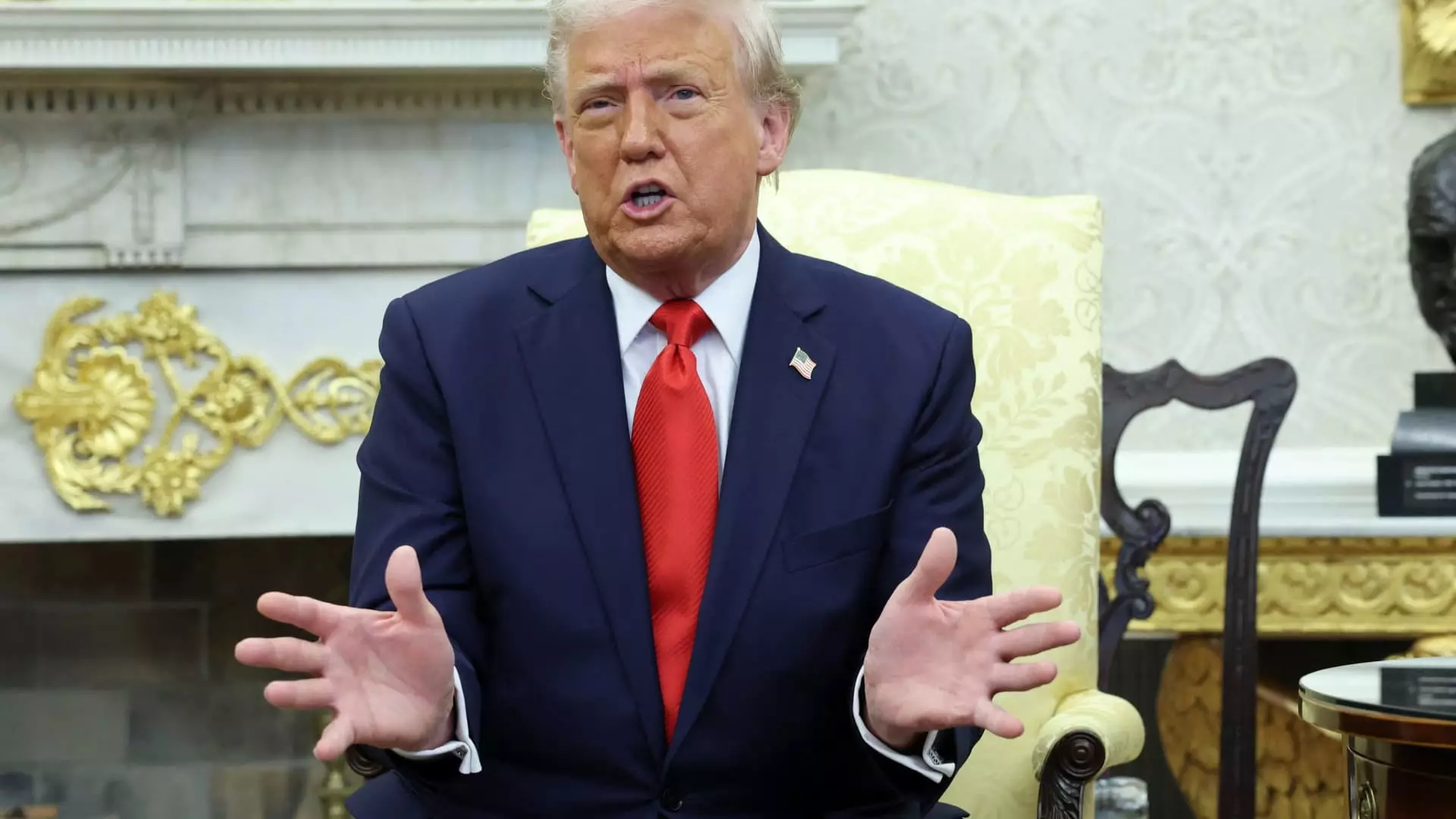In a historic twist, Wall Street banks have reported a staggering $16.3 billion in stock trading revenue for the first quarter of 2023, a growth of 33% compared to the previous year. This monumental increase comes in the backdrop of a volatile economic landscape, where institutional investors have been compelled to adjust and reposition themselves for an era characterized by uncertainty. Major players such as Goldman Sachs, Morgan Stanley, JPMorgan Chase, and Bank of America have all reaped extraordinary gains, each pulling in about $4 billion, a phenomenon that traders have enthusiastically dubbed as “spectacular” and “extraordinary.” This dramatic turnaround raises critical questions about the actual dynamics at play in this market and the underlying factors driving these results.
Trading Versus Investment Banking: A Paradigm Shift
Initially, the onset of President Trump’s administration was anticipated to herald a “Trump boom” for investment banking, focused on high-stakes mergers and acquisitions. The expectation was that deal-making would soar, benefiting investment bankers in the process. However, contrary to these predictions, the trading floors have emerged as the unexpected victors, while investment banking remains sluggish. With corporate decision-makers cautious, they are delaying strategic moves due to ongoing uncertainties, leaving traders to flourish amid market chaos. This shift exemplifies a broader trend: as traditional banking faces challenges, trading is becoming the lifeline that sustains major financial institutions.
Sustaining Momentum: The Importance of Volatility
The current trading success can be attributed directly to market volatility. Analysts like James Shanahan of Edward Jones maintain that as long as this volatility persists, trading desks will likely remain busy. The echo of COVID-19 and geopolitical tensions, alongside unfolding economic policies, creates an ideal environment for traders who are capitalizing on rapid market fluctuations. As investors look to secure their positions amidst uncertainty, the increasing trading activity appears less a sign of straightforward market health and more a reflection of a turbulent financial ecosystem that traders are expertly navigating.
The Perils of Economic Forecasting
Despite this trading bonanza, the reality beneath the surface is rife with risks. JPMorgan executives have indicated that economic models predict a rise in unemployment to 5.8%, up from 4.2%, highlighting a grim outlook for the broader economy. While major banks celebrate their trading profits, regional banks without substantial trading operations sit in a “tough spot,” grappling with stagnant loan growth and rising defaults. This juxtaposition illustrates the fragility of what seems to be a flourishing trading environment—a striking reminder that prosperity for some can coexist with instability for others.
High-Stakes Trading in a Chaotic Environment
As Trump’s policies continue to send shockwaves through the economy, including unpredictable tariff announcements and trade tensions, the financial markets are essentially rollercoaster rides. The hyperactive trading characterized by both equities and government bonds resembles a frantic game of chess more than a predictable investment strategy. In March alone, the market’s volatility prompted significant movement as financial players adjusted their tactics in anticipation of fluctuating trade policies. Goldman Sachs CEO David Solomon indicated that the reaction to these tumultuous conditions has led to even greater levels of trading activity and profitability, which could make the outlook for the second quarter even more promising than the first.
Changing Dynamics on Wall Street
The remnants of the 2008 financial crisis are visible in the concentration of trading power among a few elite firms that dominate the market landscape. In this new paradigm, trading desks are not merely transactional participants but pivotal facilitators creating a system that emphasizes liquidity and speed. Figures like Morgan Stanley’s Ted Pick have molded their firms into adaptable entities capable of capitalizing on both rising and falling markets. The approach has evolved; banks are moving away from placing bets with their capital and focusing instead on providing the necessary leverage for professional investors to prosper.
In essence, Wall Street is morphing into an ecosystem that thrives on rapid transaction execution and client support. The question that arises is whether such a model can endure in a consistently erratic market, or if it is merely a façade that masks deeper economic vulnerabilities. The roaring success of Wall Street’s trading revenues warns of a speculative bubble driven by volatility—an exhilarating but risky endeavor that could invite significant repercussions down the line.

